1. Thomas Jefferson (1801–1809): Wrote While Standing Using a Desk He Designed

Thomas Jefferson didn’t just write history. He re-engineered the act of writing itself. Rather than sit for hours at a traditional desk, Jefferson preferred to write while standing, using a lap desk of his own invention. Crafted from mahogany with a hinged lid, sloped surface, and storage compartments, it was compact enough to carry and use almost anywhere. He designed it in the 1770s, long before standing desks became fashionable, and brought it with him during his travels, including to Philadelphia, where he drafted the Declaration of Independence. The choice to write standing wasn’t random. Jefferson believed physical posture impacted mental clarity, and he surrounded himself with tools that encouraged focus and efficiency.
That mindset extended to his home at Monticello, where he designed innovations like a revolving bookstand, a copy press, and even a dual-pen machine. He treated his workspace like a laboratory for productive thought. The original lap desk, now housed at the Smithsonian Institution, remains a quiet yet powerful symbol of Jefferson’s devotion to Enlightenment ideals. It wasn’t just a piece of furniture. It was an expression of how a president shaped ideas, not just policies, from the ground up. Source: Virginia Museum of History and Culture
2. John Quincy Adams (1825–1829): Swam Naked in the Potomac Every Morning
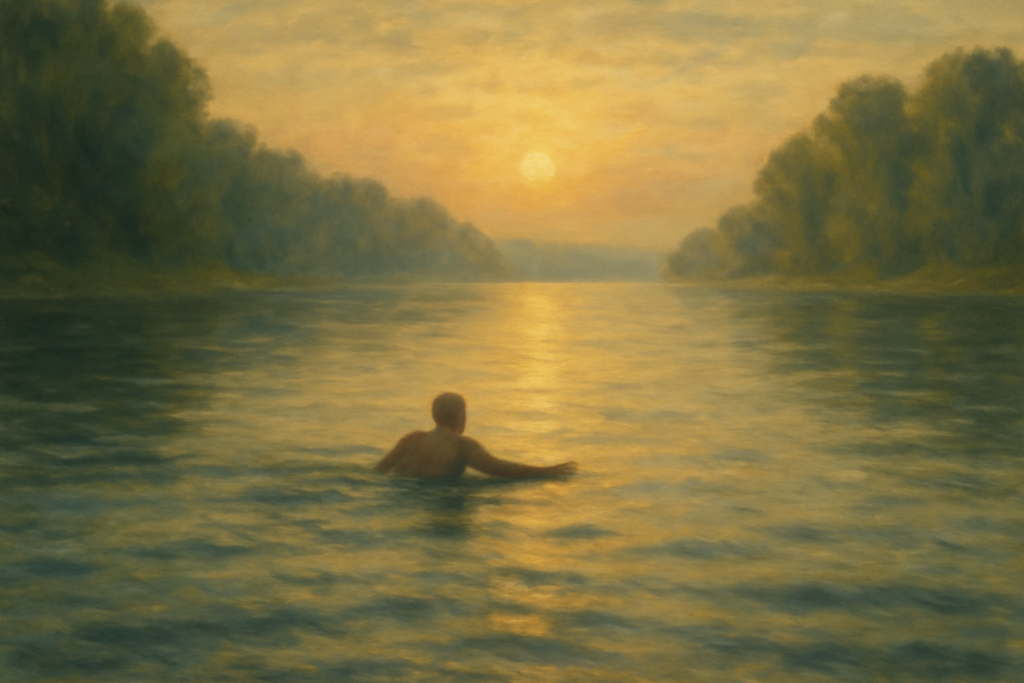
John Quincy Adams didn’t just believe in starting the day strong; he dove into it, literally. Every morning around 5 a.m., the sixth president of the United States would walk down to the Potomac River and take a nude swim, regardless of the weather. He believed the cold water invigorated the body and sharpened the mind, a routine grounded in his New England upbringing and affinity for personal discipline. While the Potomac was much cleaner in the 1820s, the act still shocked locals and observers. Adams even recorded the habit in his diaries, noting the solitude and clarity he found in the early-morning ritual.
The swim also earned him a strange footnote in journalistic history. According to legend, reporter Anne Royall, desperate for an interview, waited by the river and sat on his clothes until he agreed to answer her questions, making her the first woman to interview a U.S. president. Though some historians question the story’s accuracy, Adams’ morning plunge is well-documented and widely accepted as fact. It reveals a president who, while often reserved in public, embraced routine and resilience in ways that still surprise modern audiences. Source: WGNTV
3. Abraham Lincoln (1861–1865): Stored Notes Inside His Iconic Hat

Abraham Lincoln was never one for flash, but his towering stovepipe hat was more than just a fashion statement. It doubled as his filing cabinet. The 16th president frequently tucked speeches, letters, and reminders inside the tall crown of his signature hat. For a man who rode from courthouse to courthouse as a traveling lawyer before becoming President, improvisation came naturally. This practice followed him into the White House, where he still preferred to manage many tasks himself, storing essential documents in places where he was least likely to misplace them, such as on his head. Aides and contemporaries recalled seeing him pull notes from his hat during conversations, as well as during wartime strategy sessions.
Today, the hat lives in the Smithsonian. Though it may seem like a quirky relic, it speaks volumes about Lincoln’s character. He was practical, self-reliant, and a master at making the most of what he had. In an era before briefcases and smartphones, his stovepipe hat became a symbol of his homespun genius and humble roots. It wasn’t just a hat. It was a personal archive carried atop the head of a president navigating the most turbulent chapter in American history. Source: Smithsonian Magazine
4. William Howard Taft (1909–1913): Got Stuck in the White House Bathtub
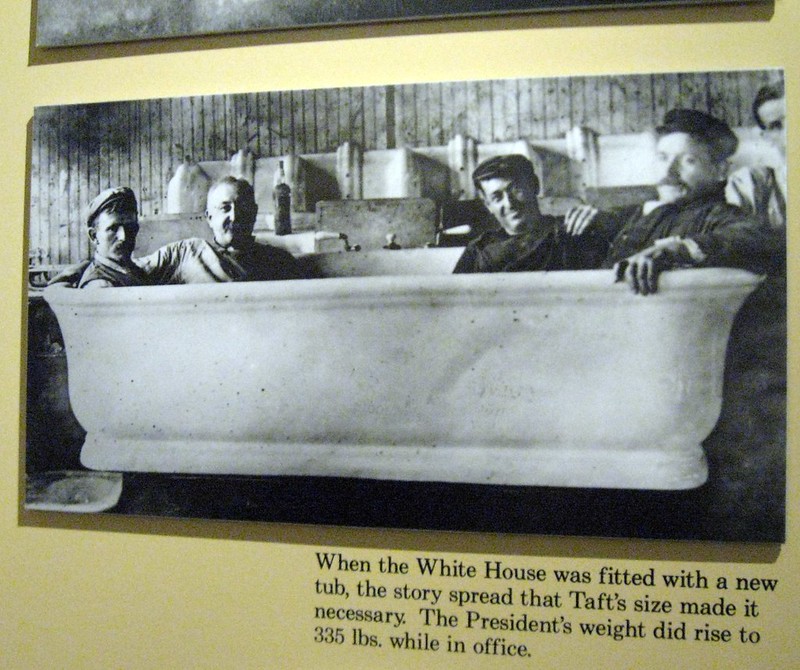
William Howard Taft, the 27th president, was known for his judicial mind and mild temperament. Still, his most enduring legacy might be tied to a tub. At over 300 pounds during his presidency, Taft was larger than any president before or since, and his size became the subject of intense media fascination. According to popular lore, he once became lodged in a standard White House bathtub and had to be helped out by several aides. Although no official record confirms the story, it was widely reported at the time and has become deeply embedded in the nation’s imagination. Editorial cartoons and satirical pieces had a field day, transforming the incident into comedic gold.
In response, or perhaps preemptively, a custom-made porcelain bathtub was later installed in the White House. Measuring seven feet long and 41 inches wide, it was big enough to fit four average-sized men and weighed a literal ton. A photo of the tub appeared in newspapers and survives today as proof of presidential adaptation. While the image of Taft stuck in the tub may blur the line between truth and folklore, it reveals how even the smallest personal challenges can become presidential lore. Source: National Archives Foundation
5. Teddy Roosevelt (1901–1909): Boxed and Practiced Judo in the White House
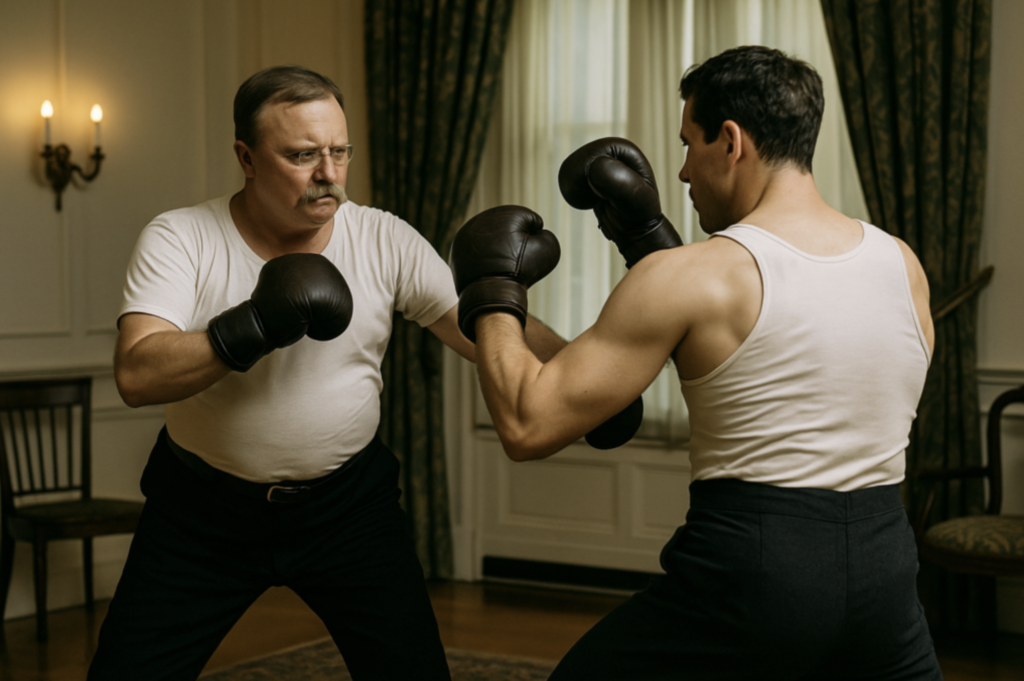
Before there were treadmills or Pelotons in the West Wing, there was Teddy Roosevelt—sparring, sweating, and occasionally bleeding in the name of fitness. The 26th president turned the White House into his personal dojo, holding boxing matches and judo sessions inside its walls. He regularly sparred with military officers and even visiting dignitaries, believing that physical strength was essential to strong leadership. Roosevelt continued boxing into his presidency until a blow from a young Army artillery officer damaged his left eye—something he kept quiet until after his term.
His interest in martial arts wasn’t just for show. Roosevelt was the first American President to study judo, earning a third-degree brown belt. According to the Theodore Roosevelt Center, he installed mats in the White House. He trained with a Japanese master, continually seeking ways to stay mentally and physically sharp. For Roosevelt, movement was life and he wasn’t about to let a desk job slow him down. Source: Theodore Roosevelt Center at Dickinson State University
6. Calvin Coolidge (1923–1929): Had His Scalp Rubbed with Petroleum Jelly During Breakfast
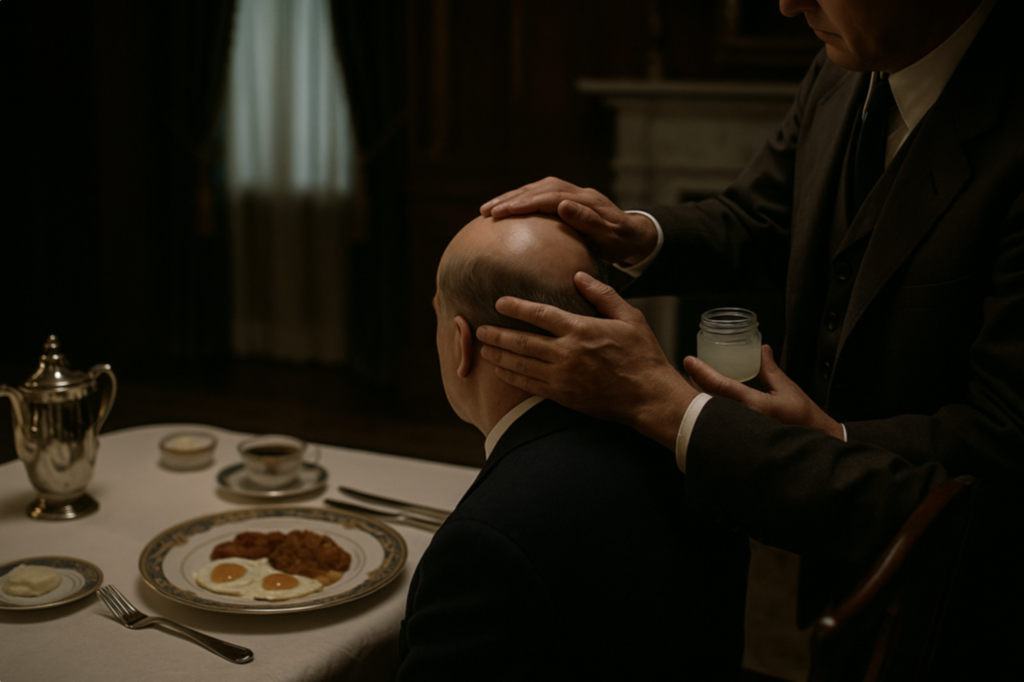
Calvin Coolidge, often called “Silent Cal” for his famously reserved personality, had one of the most peculiar morning routines in presidential history. Each day, while eating breakfast in bed, Coolidge reportedly received a scalp massage using petroleum jelly. This ritual, administered by a valet, was believed to promote hair growth, something Coolidge may have been self-conscious about. While it may sound bizarre today, it reflects the early 20th-century obsession with vitality and tonics, which were often touted as miracle cures for aging and baldness. Coolidge, despite his stoicism, was a creature of habit and embraced routines that brought a sense of control to his otherwise highly public life.
Though his public image was austere, Coolidge was meticulous about his health and appearance. He followed an early bedtime, took long naps, and reportedly weighed himself several times a day. The petroleum jelly massages were simply part of a larger effort to maintain order, energy, and possibly ego. The detail has been confirmed in multiple biographies, including those archived by the White House Historical Association, and it offers a strange but revealing glimpse into how one of the quietest presidents found peace in private rituals. Source: Grunge
7. Herbert Hoover (1929–1933): Spoke Mandarin with His Wife to Keep Conversations Private
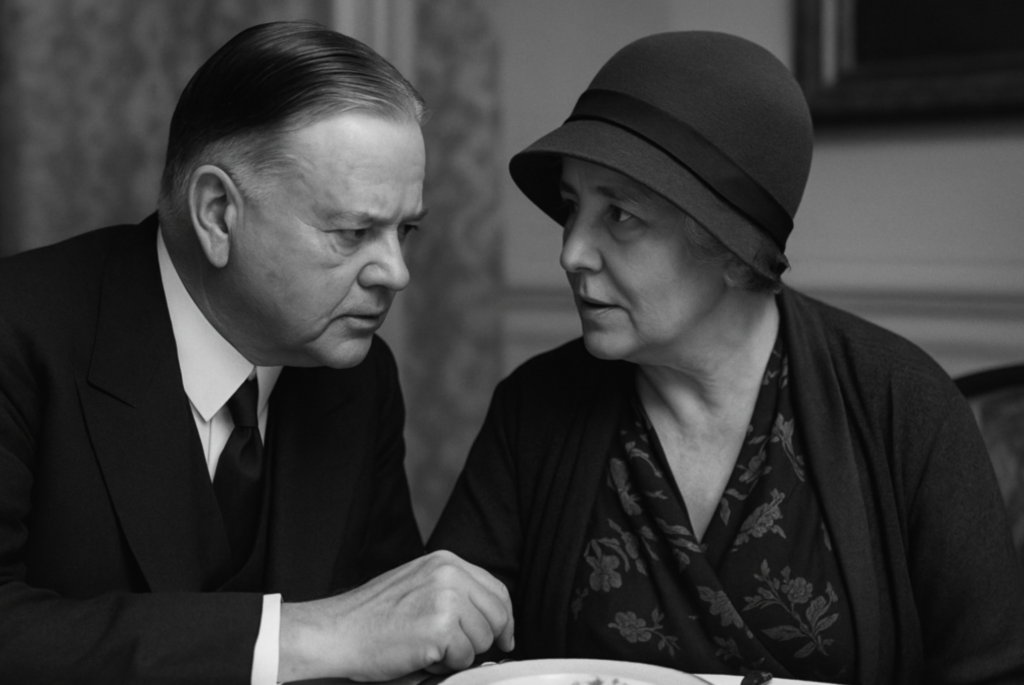
Before becoming President, Herbert Hoover and his wife, Lou Henry Hoover, spent time living in China during the early 1900s, where they both became fluent in Mandarin Chinese. That skill became their secret weapon in the White House. When they wanted to discuss something privately, whether political, personal, or sensitive, they would switch from English to Mandarin, leaving the surrounding staff or guests completely in the dark. It wasn’t just a party trick; it was their way of safeguarding conversations in a time before secure communication technology. The Hoovers were the first and only presidential couple known to share fluency in a foreign language not commonly understood in Washington.
The habit revealed more than clever discretion. It reflected their deep partnership, mutual intellect, and global perspective, a rarity in early 20th-century American politics. Lou Henry Hoover was herself an accomplished scholar and the first First Lady to make a national radio address. The couple’s shared language wasn’t just about secrecy; it was also a quiet symbol of their bond. The National Archives has documented this unusual habit, which stands out as one of the more sophisticated quirks in presidential history. Source: National Archives
8. Franklin D. Roosevelt (1933–1945): Collected Stamps—Even During World War II
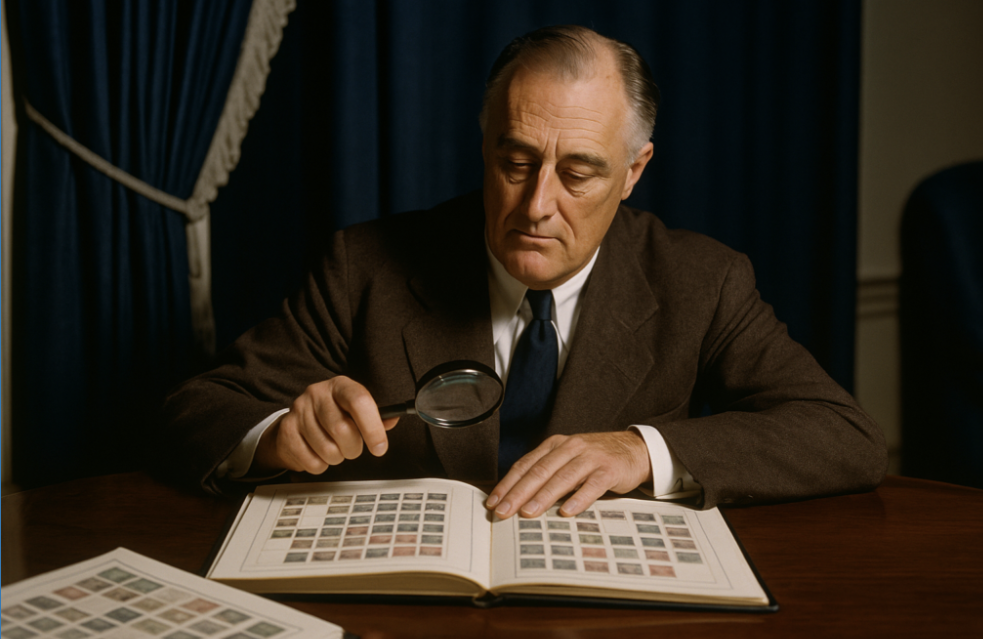
For Franklin D. Roosevelt, collecting stamps wasn’t just a childhood hobby. It became a presidential lifeline. Throughout his time in office, even during the darkest days of the Great Depression and World War II, FDR made time for philately. He would carefully examine new stamps before bed, often reviewing them during moments of stress or fatigue. Far from frivolous, Roosevelt believed the hobby helped calm his mind and keep his hands busy while contemplating major decisions. He also worked directly with the U.S. Post Office to influence stamp design, selecting historical themes and patriotic imagery that could boost national morale.
His devotion was so intense that his stamp collection eventually grew to over 1.2 million pieces. Many of them reflected his vision for America, portraits of presidents, inventors, and pivotal moments in world history. After his death, part of his collection was donated to the Smithsonian’s National Postal Museum, where it’s still on display. Roosevelt once said that stamps were “a miniature window on the world.” For him, they also offered a rare form of comfort in the chaos of leadership. Source: Smithsonian National Postal Museum
9. Harry S. Truman (1945–1953): Walked Fast But Refused to Call It Exercise
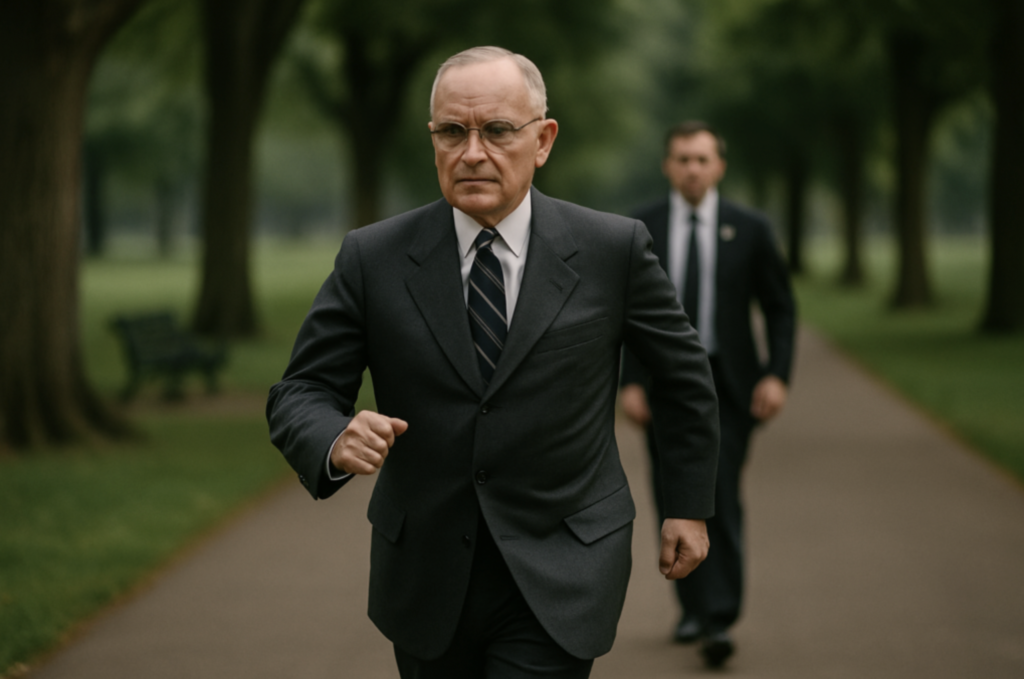
Harry S. Truman had no use for gyms or trends, but he did have one powerful daily ritual: walking. Every morning around 7 a.m., Truman would leave the White House for a brisk, mile-long walk through the streets of Washington, D.C., accompanied by reporters, Secret Service agents, and occasionally his wife, Bess. He walked so quickly that his entourage often struggled to keep up. Despite the pace and consistency, Truman rejected the idea that it was “exercise.” To him, it was just a way to clear his head and greet ordinary Americans face to face.
This understated habit became one of Truman’s trademarks. Along the way, he’d wave to shopkeepers, greet children, and sometimes stop to chat with citizens on the sidewalk. He believed that walking kept him grounded and mentally sharp in a job that often isolated men. According to the Harry S. Truman Presidential Library, he maintained the practice well into his post-presidency years. It was simple, accessible, and entirely in line with Truman’s no-nonsense personality. Source: Harry S. Truman Presidential Library & Museum
10. Dwight D. Eisenhower (1953–1961): Painted Landscapes to Escape Politics
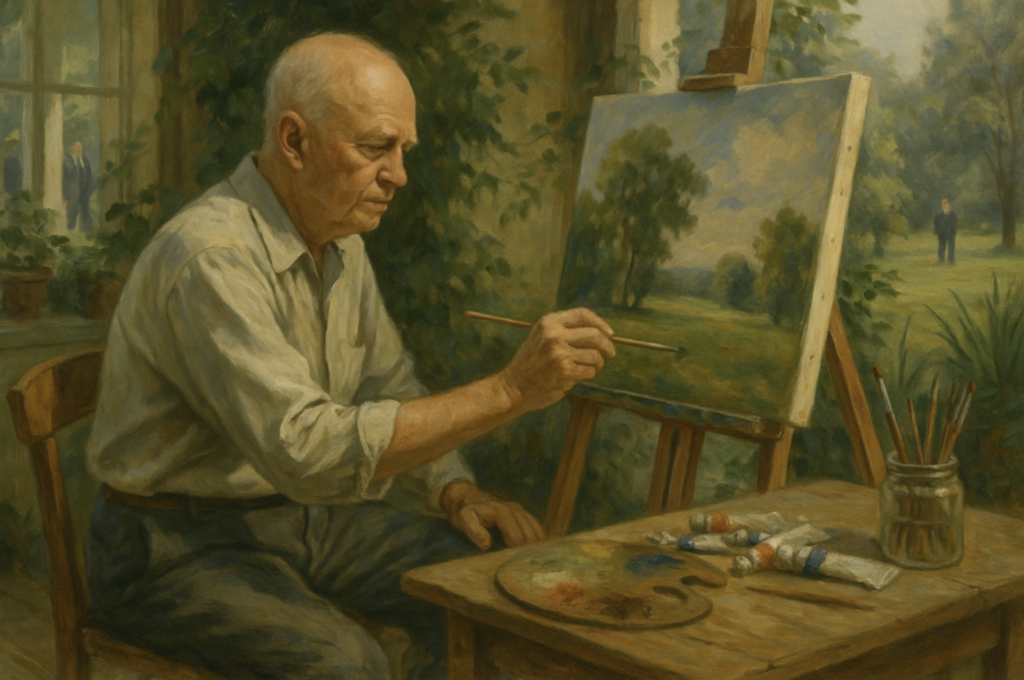
Dwight D. Eisenhower led the Allied forces to victory in World War II and served two terms as President. Still, one of his greatest personal pleasures came from a paintbrush. Ike began painting later in life, at the age of 58, encouraged by Winston Churchill and quickly turned it into a profoundly personal habit. He set up a small art studio near the White House and often painted landscapes, still lifes, and portraits in his free time. For Eisenhower, it wasn’t about artistic talent. It was about peace of mind. He once said painting helped relieve the “tensions of the day.”
Over the years, Eisenhower completed over 250 paintings. Some he gave as gifts, others he kept private, but all were part of his effort to disconnect from the relentless pressures of leadership. According to the Eisenhower Presidential Library, he considered painting one of his most effective ways to relax and think clearly. It was an unexpected outlet for a man known more for military precision than creative expression. Still, it showed a softer, more introspective side of a commander-in-chief. Source: The White House Historical Organization
11. John F. Kennedy (1961–1963): Took Daily Naps—Sometimes More Than One
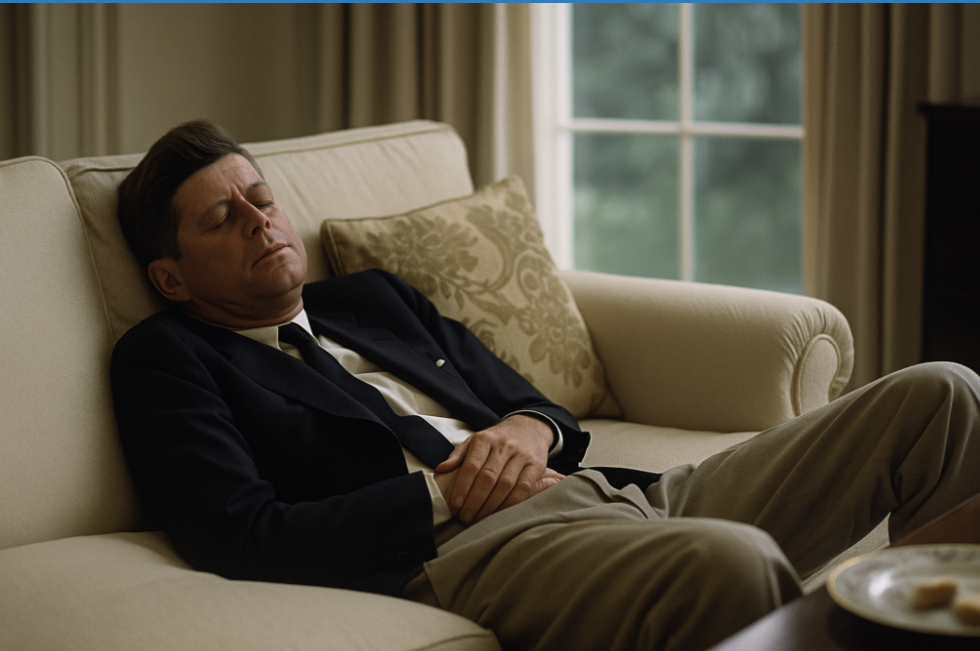
John F. Kennedy may have been one of the youngest presidents in history. Still, his energy came with a secret weapon: naps. Kennedy took a midday nap every single day, often retreating to his bedroom for 45 minutes to an hour. He insisted the room be dark, the temperature cool, and all calls held. His longtime aide, Dave Powers, said no one was allowed to disturb him during these rest periods, not even in a crisis. The routine wasn’t laziness. It was strategy. Kennedy believed naps restored his mental clarity and helped him work late into the night with complete focus.
The habit wasn’t just about preference. It was part of his lifelong battle with chronic health problems, including Addison’s disease and severe back pain. Rest was medically necessary. According to the John F. Kennedy Presidential Library, the nap ritual was so ingrained that Jackie Kennedy once joked their marriage included a third partner: his midday sleep. It was a quiet cornerstone of a presidency often remembered for its glamour and pressure. Source: John F. Kennedy Presidential Library and Museum
12. Lyndon B. Johnson (1963–1969): Gave Orders from the Bathroom—with the Door Wide Open
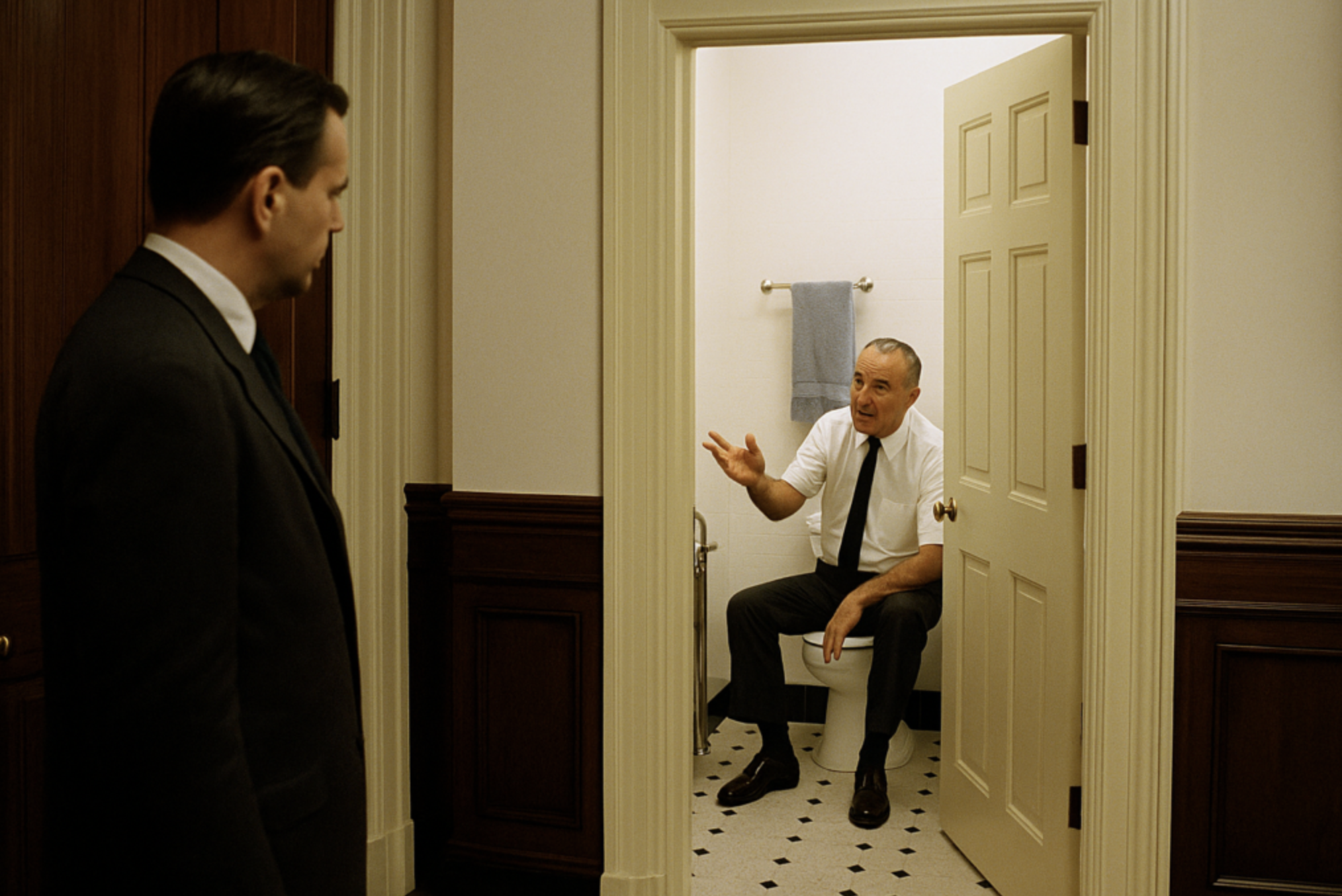
Lyndon B. Johnson was not known for subtlety. The towering Texan ran his presidency with a mix of charm and intimidation, often blurring the line between personal space and political power. One of his most talked-about habits was holding meetings and giving instructions from the bathroom door wide open. He was known to summon aides into the room mid-shave, mid-shower, or even while using the toilet, all without breaking his train of thought. This wasn’t a one-time occurrence; it was routine, and it left staffers stunned, sometimes speechless.
Johnson’s goal was dominance. According to multiple accounts, including those from press secretary George Reedy and biographer Robert Caro, LBJ used these situations to throw people off balance and assert control. He saw vulnerability as a tool of power his, not theirs. These moments, though awkward, became part of his larger leadership style: unapologetically direct and fiercely personal. It wasn’t about etiquette. It was about getting things done, no matter the setting. Source: History Facts
13. Richard Nixon (1969–1974): Bowled Alone in the White House Late at Night
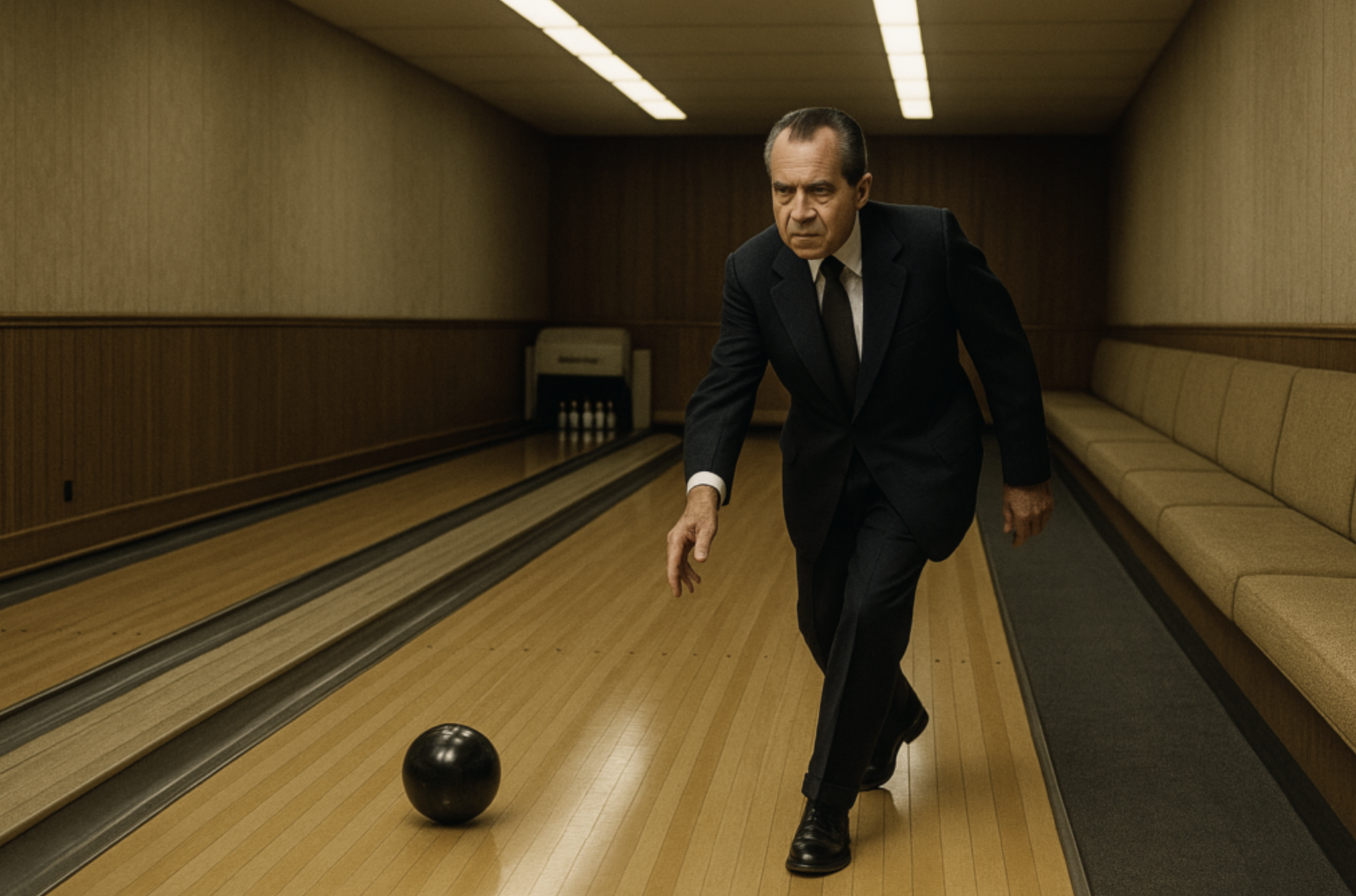
Richard Nixon had a complicated relationship with solitude, and he found an unlikely outlet for it beneath the White House. Installed during the Truman administration, the White House bowling alley became Nixon’s personal escape hatch. He often bowled alone, sometimes late at night, finding calm in the rhythmic repetition and quiet isolation of the basement lanes. It wasn’t a public activity or a family affair. It was private and often unannounced. For a president plagued by paranoia and political storms, bowling was a place where he could feel in control, even if only for a few frames.
Nixon was never known for athleticism, but he took his bowling seriously. Staff would later recall hearing the steady thud of pins echoing through the White House late in the evening. According to the Nixon Presidential Library, he even had custom-made balls and shoes. For a man whose presidency unraveled amid secrecy and scandal, the image of him bowling alone in silence feels hauntingly symbolic of a solitary leader rolling strike after strike into the void. Source: The White House Historical Association
14. Gerald R. Ford (1974–1977): Started Every Day with a Swim in the White House Pool
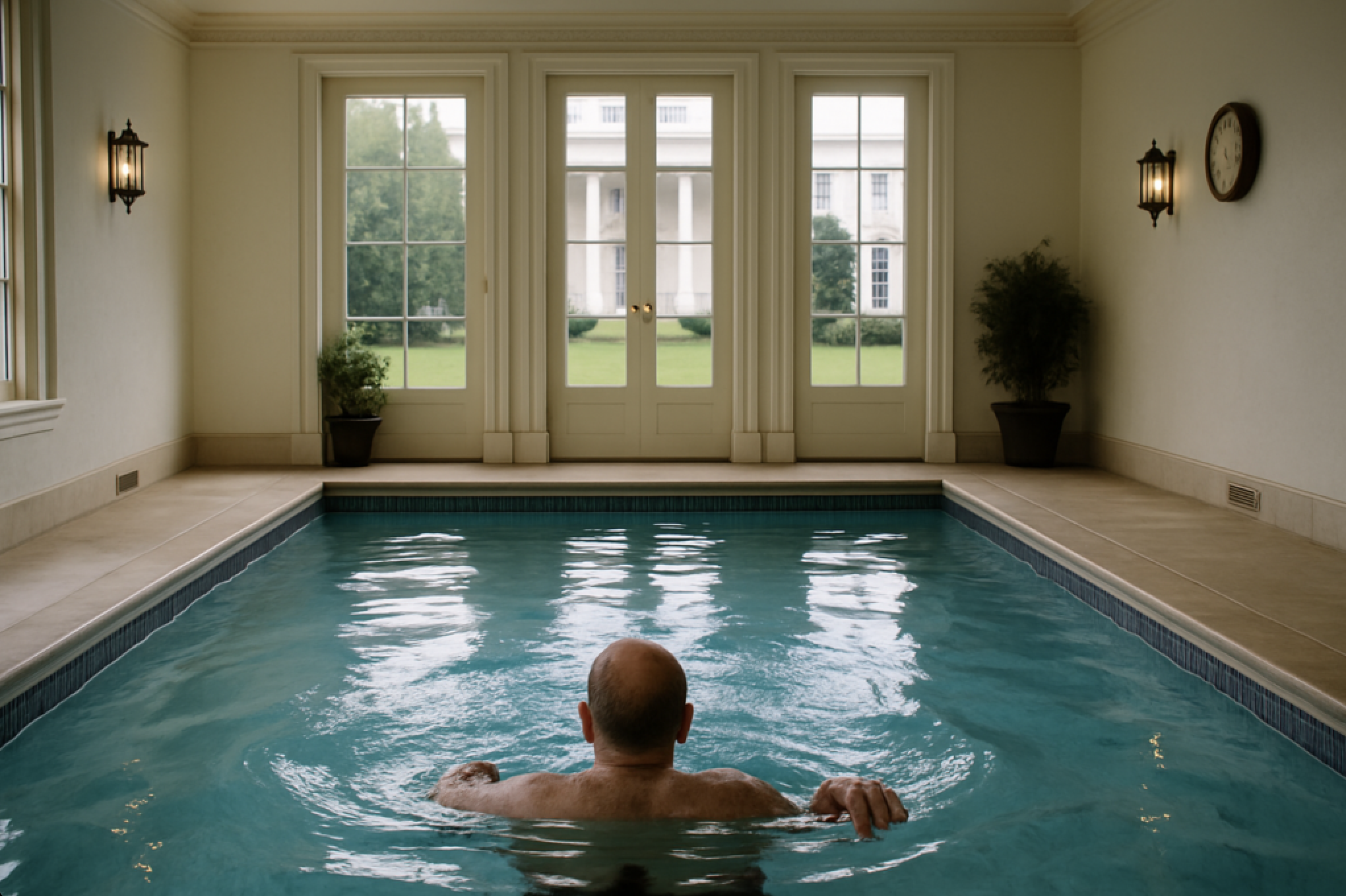
Gerald Ford began nearly every morning with a vigorous swim in the White House pool, treating it as non-negotiable self-care. The 38th president, a former college football star at the University of Michigan, stayed active throughout his life and viewed swimming as the best way to clear his head before the day’s duties. Staff members described how he would hit the pool around 7 a.m., swimming up to a mile without interruption. The exercise helped him manage stress and maintain physical discipline, two traits that he carried into both his political and family life.
Ford’s swim sessions were sometimes open to photographers, who captured the President mid-lap or toweling off in his iconic swim trunks. Unlike the theatrical habits of some predecessors, Ford’s swimming felt humble, even relatable. It also reflected his desire to bring calm and normalcy to the White House, which was recovering from the Watergate scandal. According to the Gerald R. Ford Presidential Library, the routine remained one of the few constants in a presidency shaped by rapid change. Source: Gerald R. Ford Presidential Library & Museum
15. Jimmy Carter (1977–1981): Spent Hours Reading Government Reports Alone in the Oval Office

Jimmy Carter was known for his intellect and discipline, and his approach to governing reflected both. Rather than rely solely on briefings or summaries, Carter insisted on reading original government reports, thousands of pages of data, memos, and budget details himself. He would often stay late in the Oval Office, poring over material line by line, sometimes marking the pages with his own notations. Aides described stacks of binders on his desk and lights glowing long into the night. This was not delegation. It was devotion to detail.
Carter’s hands-on approach frustrated some staffers, who worried he was micromanaging or wasting time on minutiae. But the former naval officer and engineer saw it differently. He believed deeply in doing the homework and knowing every angle before making a decision. According to the Carter Presidential Library, his reading habits reflected both his character and his lifelong commitment to public accountability. In an office built on delegation, Carter stood out as the President who wanted to read every word. Source: Miller Center
16. Ronald Reagan (1981–1989): Watched Old Hollywood Movies to Unwind
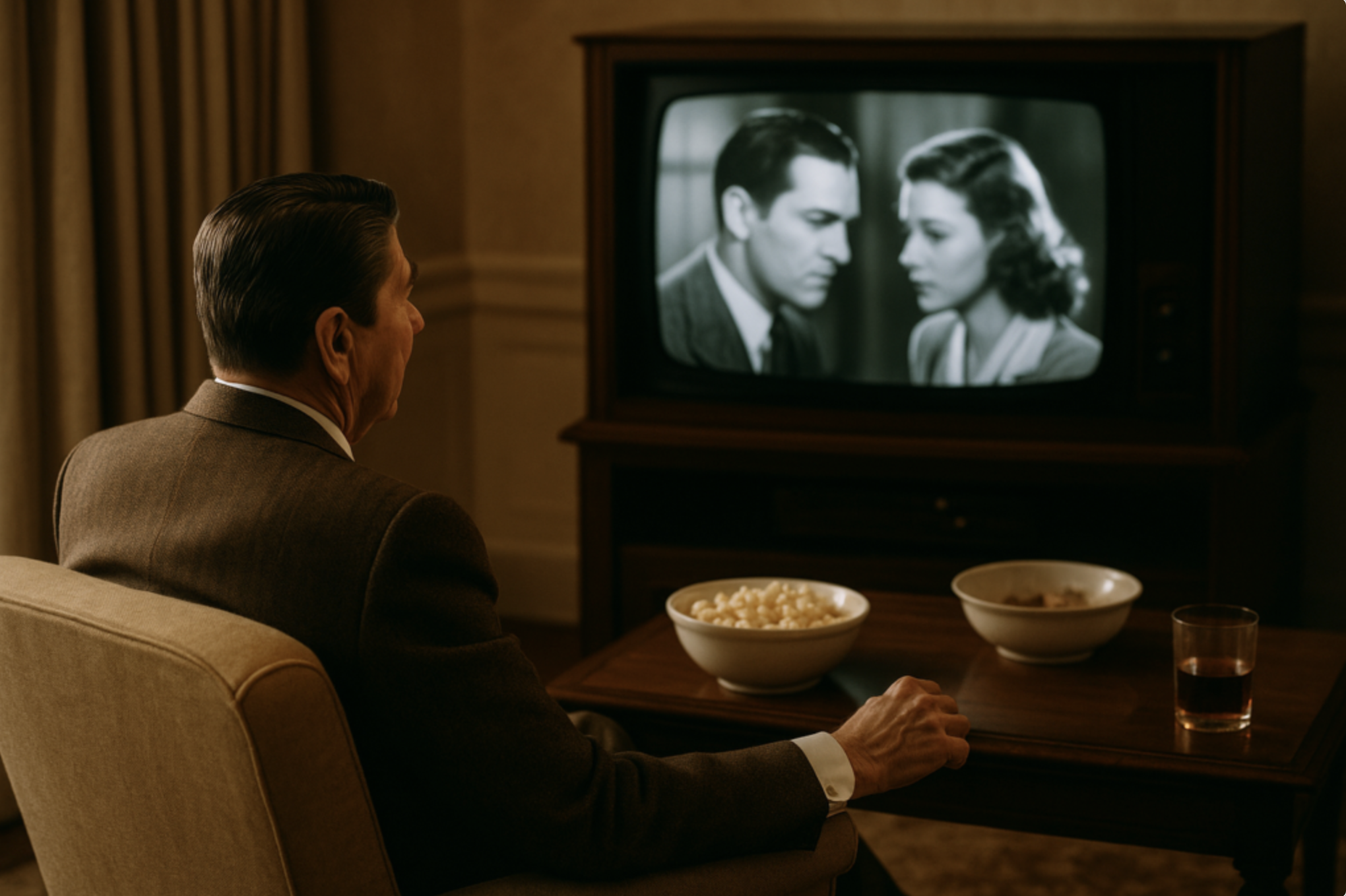
Long before he entered politics, Ronald Reagan was a Hollywood actor, and that part of him never left the White House. As President, Reagan often spent evenings watching old films, particularly the black-and-white classics of the 1930s and 1940s. He kept a collection of his favorites close at hand and even screened them in the White House theater. According to staff, he used the films not just as entertainment but as emotional reset buttons, helping him decompress after long days filled with diplomacy, economic battles, and Cold War tensions.
Reagan’s fondness for cinema wasn’t purely nostalgic. He believed films had the power to uplift, clarify values, and strengthen national identity sentiments that bled into his speeches and storytelling. Whether revisiting his own screen roles or immersing himself in the golden age of Hollywood, the practice gave him a sense of continuity and calm. The Reagan Presidential Library confirms that movies were a vital part of his downtime, a quiet ritual for a man who had spent his life in both politics and the performing arts. Source: Ronald Reagan Presidential Library & Museum
17. George H. W. Bush (1989–1993): Played Horseshoes on the White House Lawn
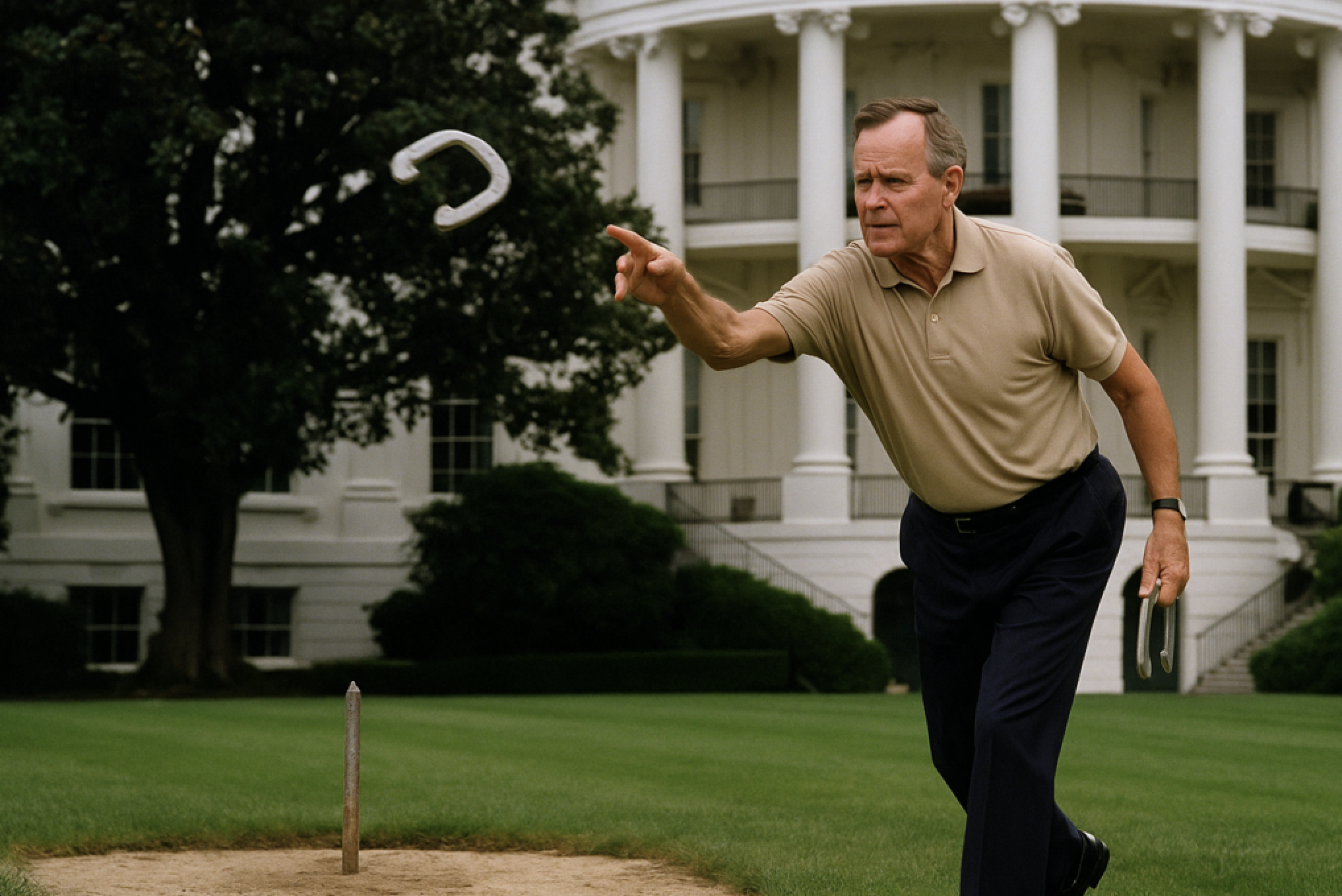
George H. W. Bush didn’t just bring diplomacy and a Yale pedigree to the presidency. He also has a competitive streak and a deep love of classic backyard games. One of his favorite stress relievers was horseshoes, a game he played frequently on the South Lawn of the White House. He had an official horseshoe pit installed shortly after taking office. He would challenge staff, Secret Service members, and even visiting dignitaries to friendly but spirited matches. He took the game seriously, often keeping score with precision and practicing his toss to near-perfection.
For Bush, the game was more than a distraction. It was a relationship builder and a return to simplicity. He saw it as a way to break the formality of politics and connect on a more human level. According to the George H. W. Bush Presidential Library, the President’s favorite horseshoe set was custom-made, and he kept it with him even after leaving office. The sound of clinking metal on the White House lawn became a symbol of his laid-back leadership style, blending approachability with competitive edge. Source: George H. W. Bush Presidential Library
18. Bill Clinton (1993–2001): Played Saxophone to Unwind—Often Late at Night
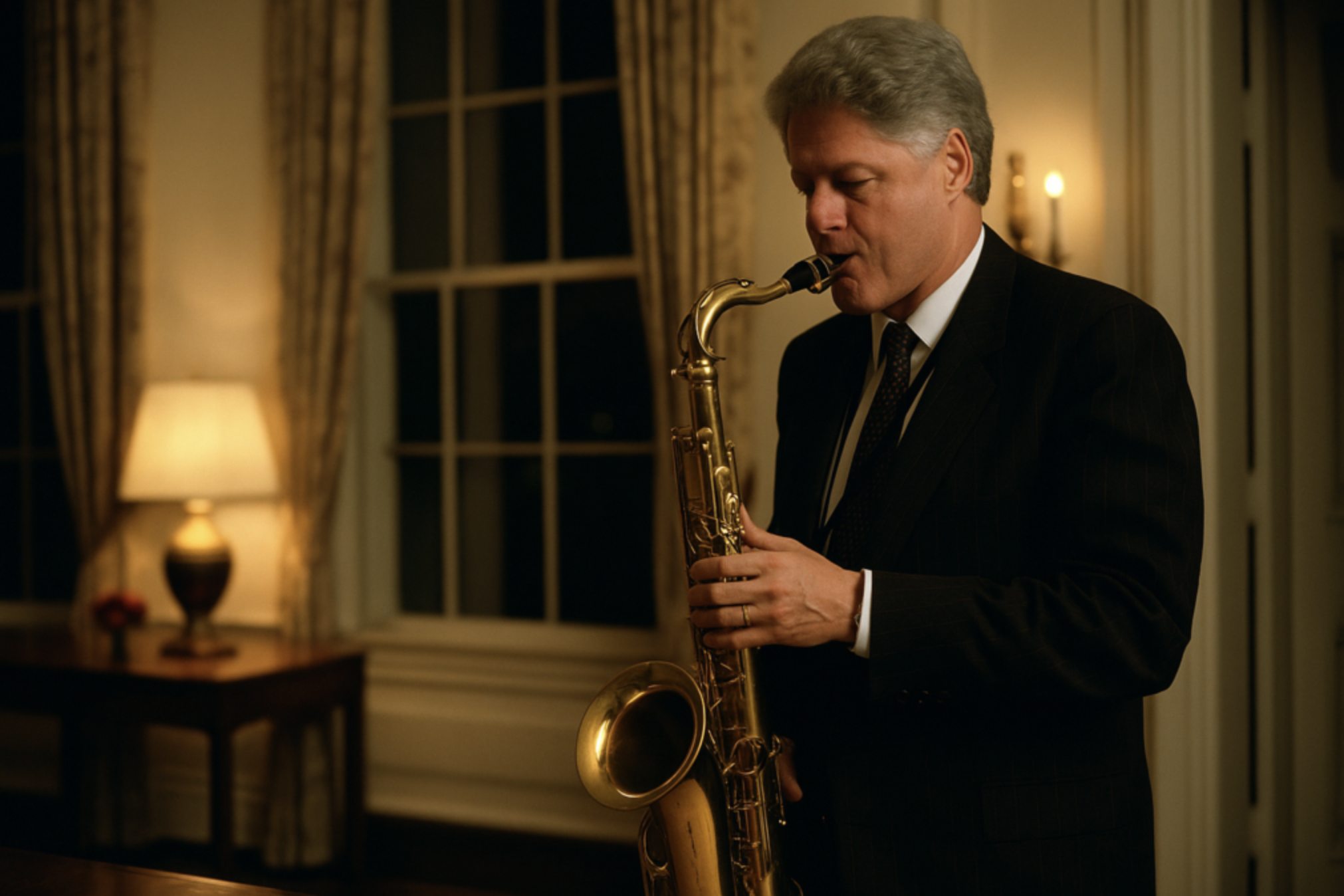
Long before he stepped into the Oval Office, Bill Clinton was known for his love of the saxophone, a passion he carried with him throughout his presidency. He famously played on late-night TV during his campaign, but in private, music became a more intimate ritual. Clinton often used his saxophone to unwind after a long day, sometimes playing solo in the White House residence late at night. Aides said he would disappear with his instrument for an hour or more, using jazz to reset his mind from the nonstop demands of public life.
Clinton’s relationship with music ran deep. He maintained a collection of jazz records in the White House. He even hosted performances by artists such as Wynton Marsalis and Herbie Hancock. According to the Clinton Presidential Library, he viewed music not only as a form of relaxation but as a key to emotional resilience. His saxophone wasn’t just a prop; it was a lifeline, a way to stay grounded during some of the most chaotic years in modern politics. Source: Wikipedia
19. George W. Bush (2001–2009): Went to Bed by 9 P.M. and Kept a Strict Routine

George W. Bush believed that consistency breeds clarity, and that started with sleep. Unlike many of his predecessors who stayed up into the early hours or thrived on adrenaline, Bush was a self-described early-to-bed, early-to-rise President. Most nights, he was in bed by 9 p.m., reading or watching sports before lights out. He rose early, often around 5:15 a.m., and began each day with a workout, usually a run or session with a personal trainer. His routine was so structured that staff often joked they could set their watches by it.
This rigid schedule wasn’t just a matter of personal preference. It was how Bush managed stress, decision fatigue, and the unrelenting pace of post-9/11 leadership. He viewed rest and order as foundational to sound judgment. According to the George W. Bush Presidential Center, his routine was one of the few constants during two wars, a national tragedy, and an economic crisis. While some critics mocked the early bedtime, it was a deliberate strategy rooted in discipline, focus, and the belief that showing up fully rested was part of the job. Source: George W. Bush Whitehouse Archives
19. Barack Obama (2009–2017): Played Basketball to Unwind and Stay Grounded
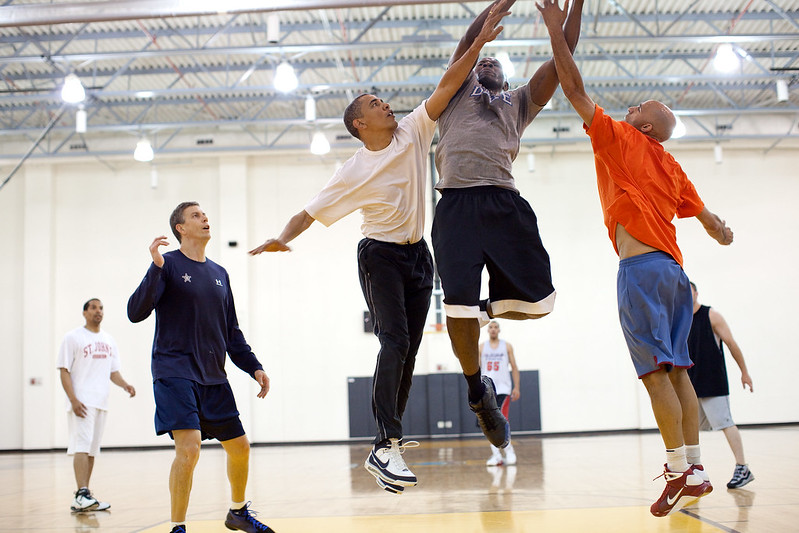
Barack Obama didn’t just love basketball, he used it as a personal anchor in the chaos of politics. Known for his smooth jump shot and competitive edge, Obama played regularly throughout his presidency, often organizing pickup games with friends, staff, and even former college athletes. While he didn’t play every day, basketball remained one of his favorite ways to decompress, stay fit, and maintain a sense of routine. He used nearby military gyms and even replaced the White House bowling alley with an indoor court.
The game wasn’t just about fitness, it mirrored his leadership style. Obama valued agility, teamwork, and quick decision-making, both on the court and in office. According to the Obama Presidential Library, basketball became a personal escape and a way to connect with others beyond politics. Whether on Election Day or after a tense policy debate, hitting the court helped him return to himself.
Source: USA Today
21. Joe Biden (2021–Present): Attends Mass Every Weekend—Even While Traveling
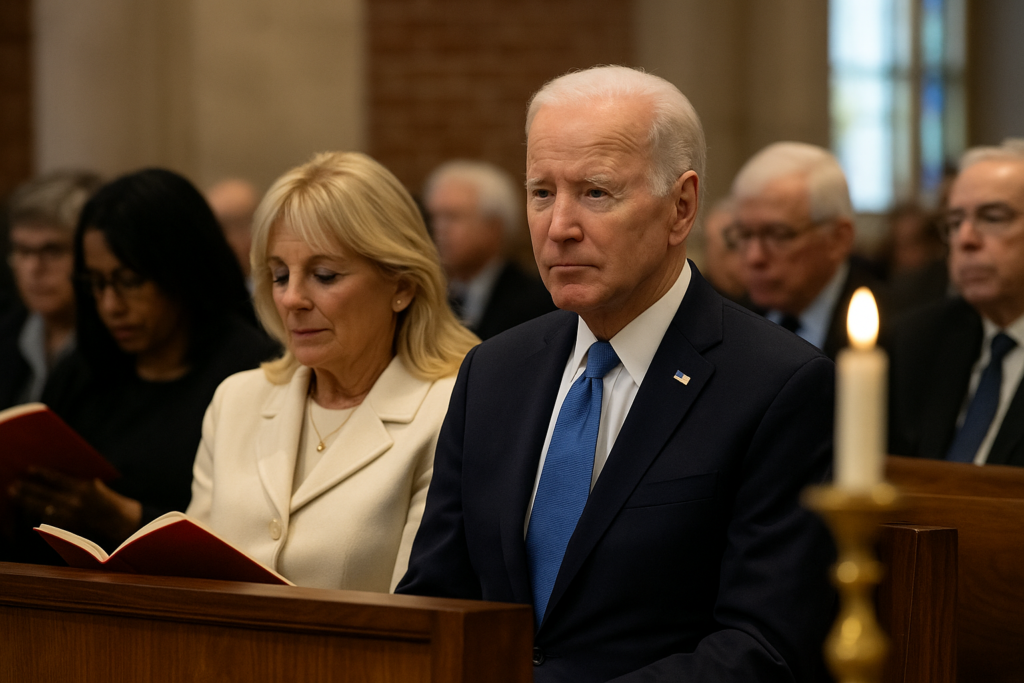
For Joe Biden, faith is more than tradition. It’s a foundation. As the second Catholic President in U.S. history, Biden has maintained a steadfast spiritual practice throughout his life: attending Mass every weekend, regardless of his location. Even as President, when his schedule is filled with urgent global affairs and domestic pressures, he consistently finds time to slip into a pew. Whether at his home parish in Delaware or at churches near Camp David or abroad, he makes attending Mass a non-negotiable. Often joined by family or close advisors, it’s a quiet ritual that anchors his week.
Biden’s devotion isn’t performative. He carries a rosary belonging to his late son, Beau. He has cited his faith as a source of strength during personal and political trials. According to the White House and various public appearances, his team coordinates local parishes wherever he travels, ensuring he keeps his commitment. In a role that often disconnects people from their routines, Biden’s weekend Mass is one habit he has never broken, even as commander-in-chief. Source: National Catholic Reporter
When Power Meets Personality
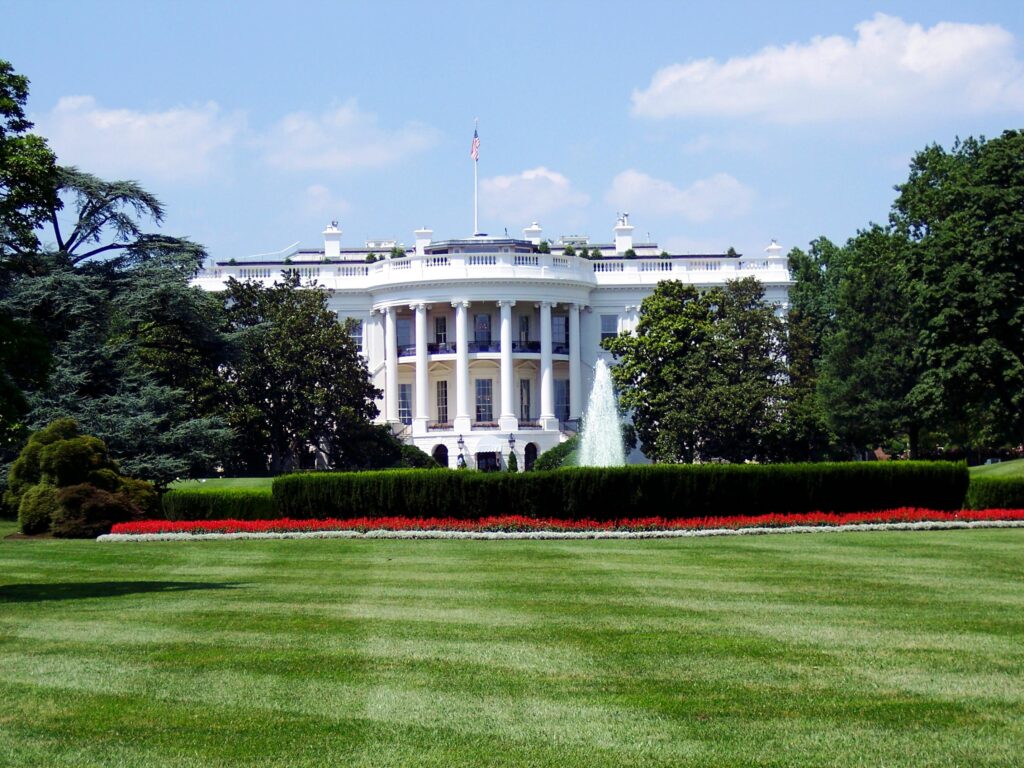
For all the pomp of the presidency, it’s these quiet, strange, and deeply personal rituals that remind us the White House has always been home to real people—flawed, fascinating, and sometimes downright eccentric. From Jefferson’s handcrafted standing desk to Obama’s basketball breaks and Biden’s weekly Mass, each habit tells us something beyond politics. It reveals how these men coped with pressure, preserved their identity, or found moments of joy amid chaos.
The story 21 Strange Daily Habits of U.S. Presidents – From Cold Plunges to Midnight Rambles was originally posted on DailyFetch.


